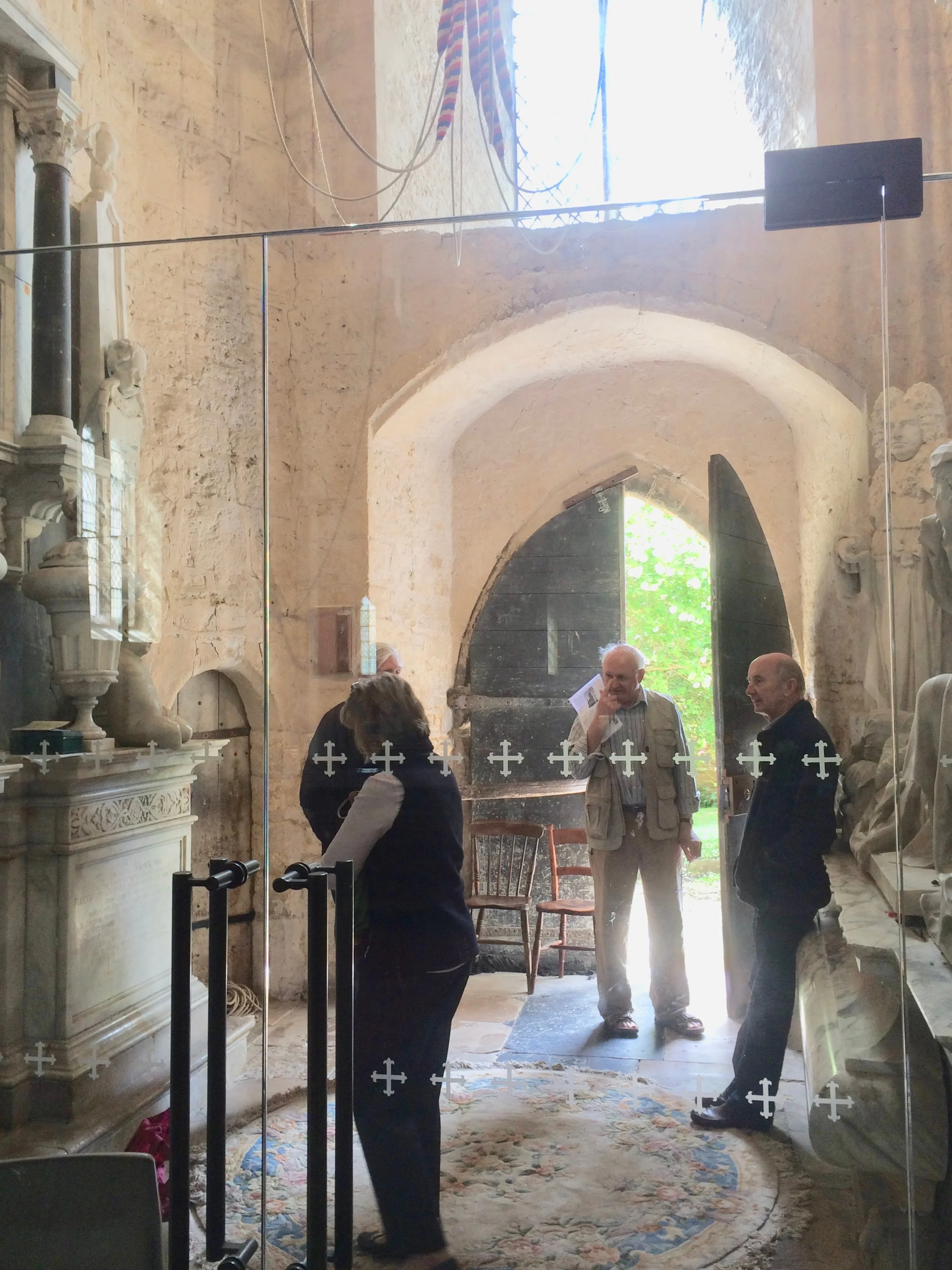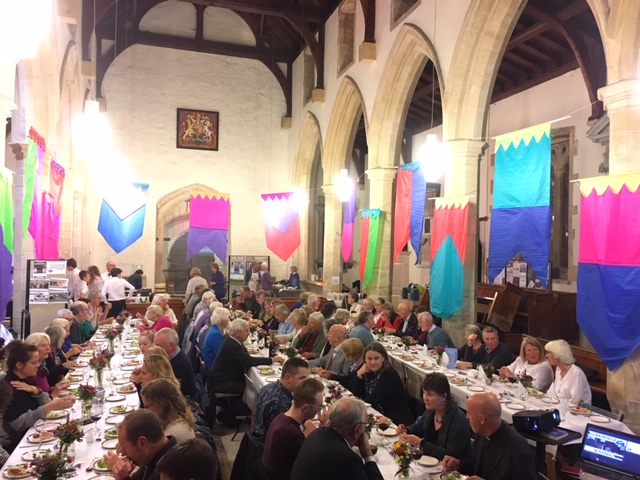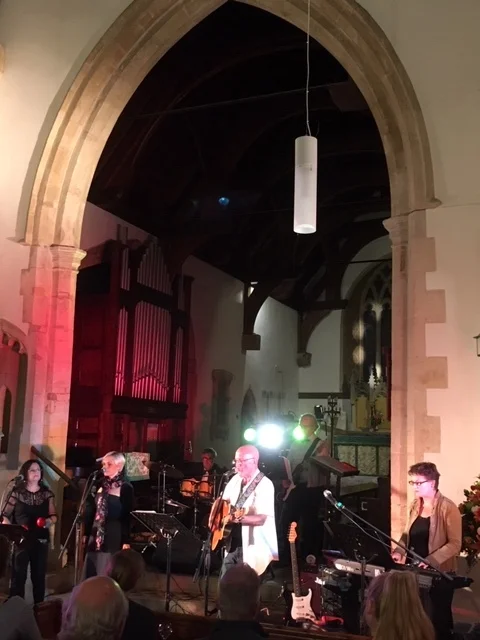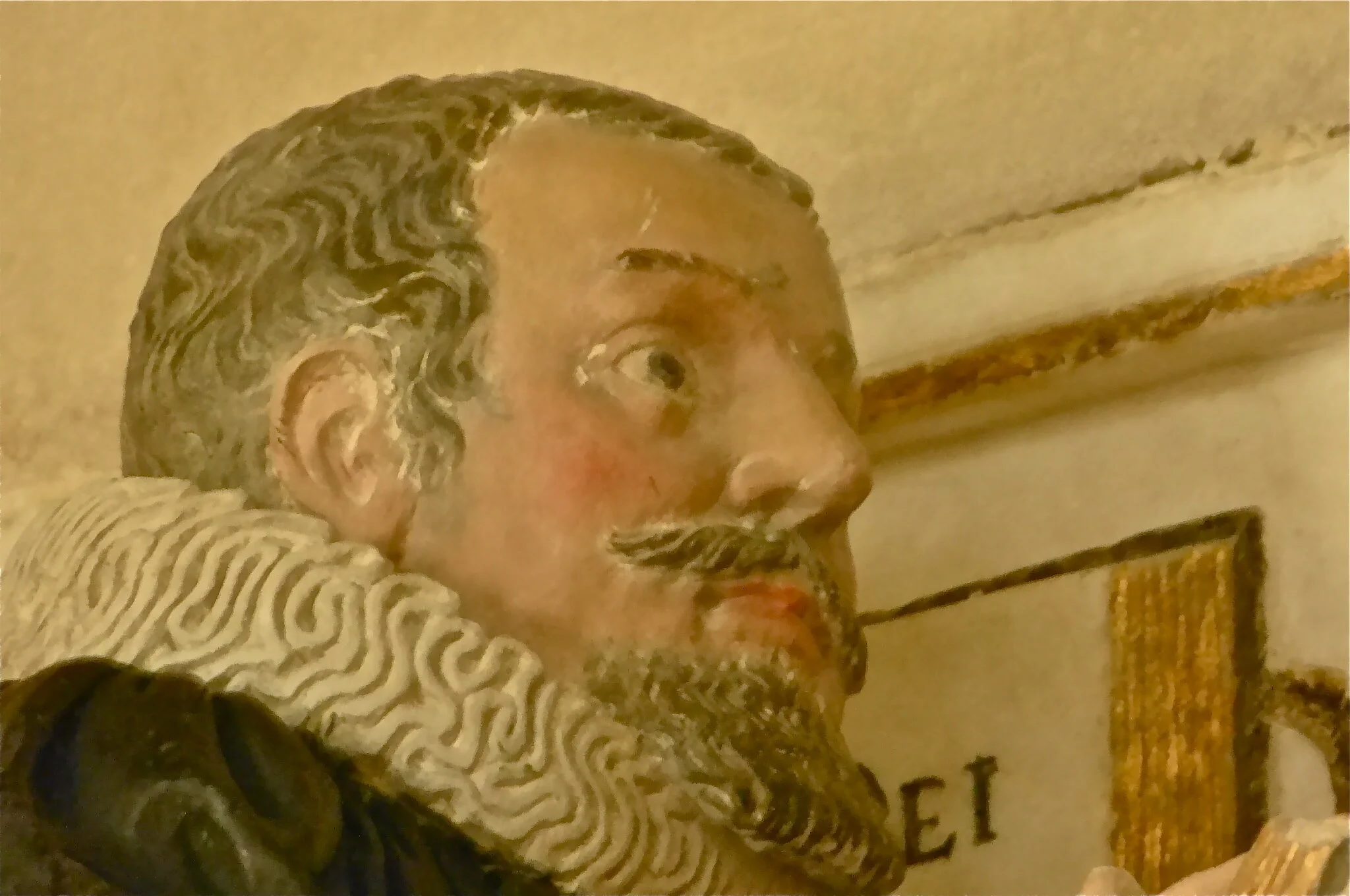Photo: Sean Walmsley.
Quainton parish church
Holy Cross & St Mary’s
Photo: Sean Walmsley
Holy Cross & St Mary’s is a fine 15th century building overlooking the Vale of Aylesbury. Rectors go back further to the 14th century. There are many magnificent monuments erected by powerful families in the 16th, 17th and 18th centuries and an earlier brass memorial in Norman French. We have a Tudor communion chalice and silver presented to the church by Dame Anne Piggot, the lady of the manor after the restoration of the monarch in the 17th century. Her family had been Cromwellians and had purchased a pardon from Charles II. On the wall of the south aisle is a memorial to Dr Richard Brett, one of the translators of the King James Bible. There are eight 16/17th century bells which ring out lustily every Sunday.
When we arrived here in 1972 the rector was an elderly Oxford-educated man, a high Anglican, who lived alone in the 17th century rectory over the road, once occupied by Richard Brett, one of the translators of the King James Bible (see below). We now have our fifth vicar since then, a very different type of man, originally a Baptist minister who plays the guitar in church. His wife is also an ordained priest who has recently graduated with a Masters Degree in Theology and now has a part-time assignment as Curate at Wycliffe Hall, the Oxford-based Church of England theological college, where she studied.
Over the years there has been a distinct change of emphasis. A village choir has been set up, there is an active Sunday Club in the church, Bible study sessions are held in the rectory and there are regular concerts organised by the excellent organist who is also a professional music teacher. However, the church remains discernibly Anglican and evening services, particularly, have held up well over the year, retaining the support of the village.
Glass door to the tower.
This is my second stint as churchwarden having responsibility with my fellow warden for the church fabric and acting as a bridge between the vicar and the parish. I love the ancient building and revere the medieval craftsmen who built it with such skill. We have installed better lighting, a glass door to the tower to showcase the bell ringers, a meeting room, and repaired the tower roof and more recently raised the funds and arranged for the conservation of the two fine 17/18th century monuments in the ringing chamber, one by the famous sculptor, Michael Rysbrack. Tasks ahead include a new – and we hope – more effective heating system and replacing the 19th century pews with movable seats to enable the church to be used for other activities as well as services.
The recently conserved 18th century monument to Sir Robert and his family. He and his wife are grieving over their dead son. The monument is almost certainly by the nationally known sculptor, Michael Rysbrack.
The two monuments were dismantled and brought out into the west end of the nave for cleaning.
Conservators at work on the Dormer monuments. The conservation project took four months and cost over £100,000.
Photograph courtesy of Quainton News
Photograph courtesy of Quainton News
Every three years we mount a stewardship campaign to raise support for the church. The banquet is a major part of the campaign and is open to everyone in the parish. In 2108 it was held in the church on 6 October. The event was sold out.
As part of the campaign, Steve and friends entertained us with an evening entitled ‘My Life in Music’. The church again was packed.
Dr Richard Brett, Rector of Quainton 1595-1637, a translator of the King James version of the Bible
Click here for report on Brett celebration held on 14 May 2022.
The Rev Richard Brett served Quainton as Rector for 43 years, from 1595.
He lived with his family in the Rectory opposite the church. He married Alice Brown, daughter of Richard Brown, at one time Mayor of Oxford. They had four daughters who kneel either side of him on the memorial.
But Brett is remembered not only as an exemplary parish priest but as one of the translators of the greatest examples of English literature, the King James version of the Bible.
Brett entered the Oxford college of Hart Hall as a commoner in 1595 and was appointed Rector of Quainton in 1595. In the same year he was granted a Fellowship by Lincoln College where he studied Latin, Greek, Aramaic, Hebrew and Ge’ez.
Translation of the Bible had once been punishable by death but gradually attitudes changed and a number of vernacular translations were in hand. The need for a version incorporating the best of these translations became apparent and King James played a leading part in bringing this about.
King James selected all 54 translators – ‘all our principled learned men’. They were not paid for this arduous task but the King provided rich livings to those who had not already been beneficed. The teams had to provide the King with frequent reports on progress. The translators were to proceed with all haste and they were not to leave their places of work until the translations were complete.
Brett was assigned to the Oxford Isaiha – Malachi – group. Members of the group (8-10 people) worked together throughout the process of translation and would have read aloud each section to ensure that the whole group agreed.
After eight years the manuscript was completed and handed over to the King’s printers. While the King himself appeared to lose interest and made no contribution to the production costs, the publication of the new James Bible was a major achievement and of profound importance to Christian communities throughout the world.
We are deeply grateful for the support we have received for this project:
Architect: Bruce Mullett
Conservator: Imogen Paine
Funders: Basil Smith, Quainton PCC, Pilgrim Trust
The Diocese wanted us to check the quality of the paint on the monument. The Courtauld Institute carried out the tests for us and found it was the original paint.
Imogen Paine undertook the conservation of the monument and she did a beautiful job.










